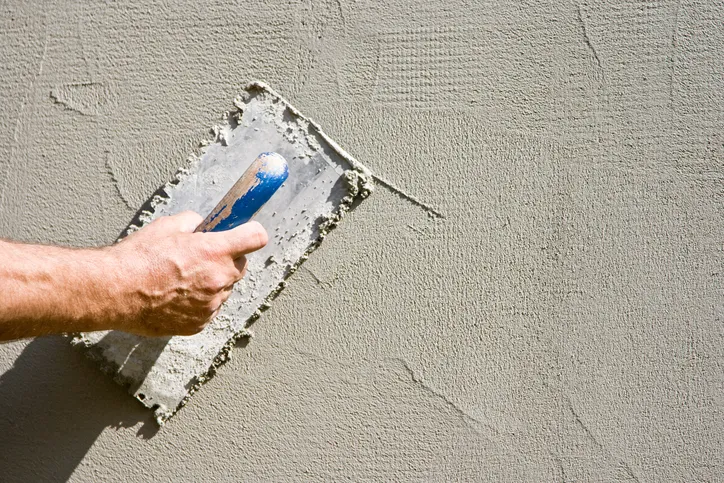Plastering Services Near Me: Find Trusted Neighborhood Plastering Professionals
Trick Tips and Devices for Successful Smudging in Your Home Renovation Endeavors
Attaining a flawless plaster surface in your home renovation projects needs a blend of the right devices and proven methods. Comprehending the subtleties of mixing plaster and using it in slim layers can significantly affect the last end result.
Crucial Smudging Devices
The essential tools include a variety of applies developed to facilitate the smudging process successfully and effectively. Trick elements include a hawk, which is a flat, square tool utilized to hold the plaster while applying it to surface areas.

Additionally, a mixing pail is needed for preparing plaster, making certain the right uniformity prior to application (Plastering). With each other, these vital plastering devices enable both experts and Do it yourself enthusiasts to accomplish premium outcomes in their plastering jobs.
Surface Preparation Techniques
Correctly preparing the surface prior to smudging is crucial for making sure bond and achieving a perfect finish. The initial step includes cleaning up the surface to eliminate any type of dirt, oil, or old paint that may impede the plaster's capacity to bond effectively. A thorough wash with a suitable cleaning option is recommended, adhered to by rinsing and permitting the surface area to dry totally.
Following, evaluate the surface area for any type of imperfections or splits. These must be loaded with an ideal filler substance and enabled to treat according to the supplier's instructions. For permeable surface areas, applying a guide is important to produce an uniform texture and boost attachment.
Additionally, it is crucial to make sure that the surface is stable and structurally noise. Any kind of loosened materials, such as flaking paint or damaged drywall, need to be repaired or eliminated. Take into consideration utilizing a scrape coat to enhance grip. if functioning with masonry surfaces.
Mixing Plaster Like a Pro

Utilizing a clean mixing container, put the water initially, after that progressively add the plaster powder while stirring continuously - Plastering. This method helps to avoid clumping and makes sure an even circulation of products. A mechanical mixer can be beneficial, her response saving and providing consistent results time. Go for a creamy, lump-free uniformity that permits very easy spreading yet is thick enough to hold its shape without running.
When mixed, enable the plaster to relax for a few minutes to enable the plaster crystals to moisten totally. This relaxing duration improves workability and reduces the risk of fracturing throughout application. By complying with these steps, you can mix plaster like a professional, setting the foundation for a successful gluing project in your home improvement ventures.
Application Methods for Smooth Finishes
With the plaster mix prepared to the ideal consistency, the next step entails picking appropriate application methods to accomplish a smooth finish. The selection of application tools considerably influences the last appearance of the plastered surface. For ideal results, a stainless steel trowel is generally recommended. This device enables a penalty, even circulation of plaster throughout the surface while minimizing trowel marks - Plastering.
Begin by applying a charitable quantity of plaster to the surface using the trowel, ensuring it adheres well. Use a systematic method, working from the bottom upward. Once the initial layer is used, utilize a sweeping movement to smooth the surface area, applying even pressure. In areas that call for even more precise attention, consider using a float, which can help remove any type of imperfections and develop a consistent structure.
For the last touches, a wet sponge can be used to refine the surface area further. Gently haze the plaster with water and carefully rub the surface area to accomplish a sleek impact. Constantly remember to function in tiny areas to maintain control over the application process, ensuring a smooth, specialist coating throughout your plastering project.
Typical Errors to Prevent
When embarking on a plastering job, staying clear of common mistakes is critical for accomplishing a flawless surface. Guarantee that all dirt, oil, and loose products are removed before using plaster.
An additional typical error is applying plaster too thickly. Thick layers can break as they dry out, compromising the integrity of the surface. Rather, choose several thin layers, enabling each coat to completely dry entirely prior to using the following.
Additionally, poor mixing methods can lead to inconsistent texture and workability. Always adhere to that site the supplier's guidelines for blending proportions and thoroughly blend the plaster to achieve a consistent consistency.

Timing likewise plays an essential duty; plaster should be navigate to these guys applied while the substrate is moist to improve attachment. Finally, avoid using incorrect devices. Top quality trowels and floats can make a considerable distinction in attaining a smooth coating. By avoiding these typical mistakes, you can improve the quality and longevity of your plastering job, resulting in an extra professional result in your home enhancement undertakings.
Conclusion
Reliable smudging calls for a comprehensive understanding of necessary tools and methods. By utilizing appropriate devices, making sure precise surface area prep work, and sticking to recommended mixing proportions, ideal results can be accomplished. Employing appropriate application techniques better enhances the surface, while recognition of common mistakes can avoid problems. Mastery of these components not just adds to the aesthetic allure of a space however additionally makes certain resilience and long life in gluing tasks, making them integral to successful home enhancement endeavors.
A float is another vital device, which helps in leveling the plaster and achieving an uniform surface.

By adhering to these actions, you can mix plaster like a pro, setting the foundation for an effective gluing project in your home improvement endeavors.
Lightly mist the plaster with water and delicately massage the surface to achieve a refined result.